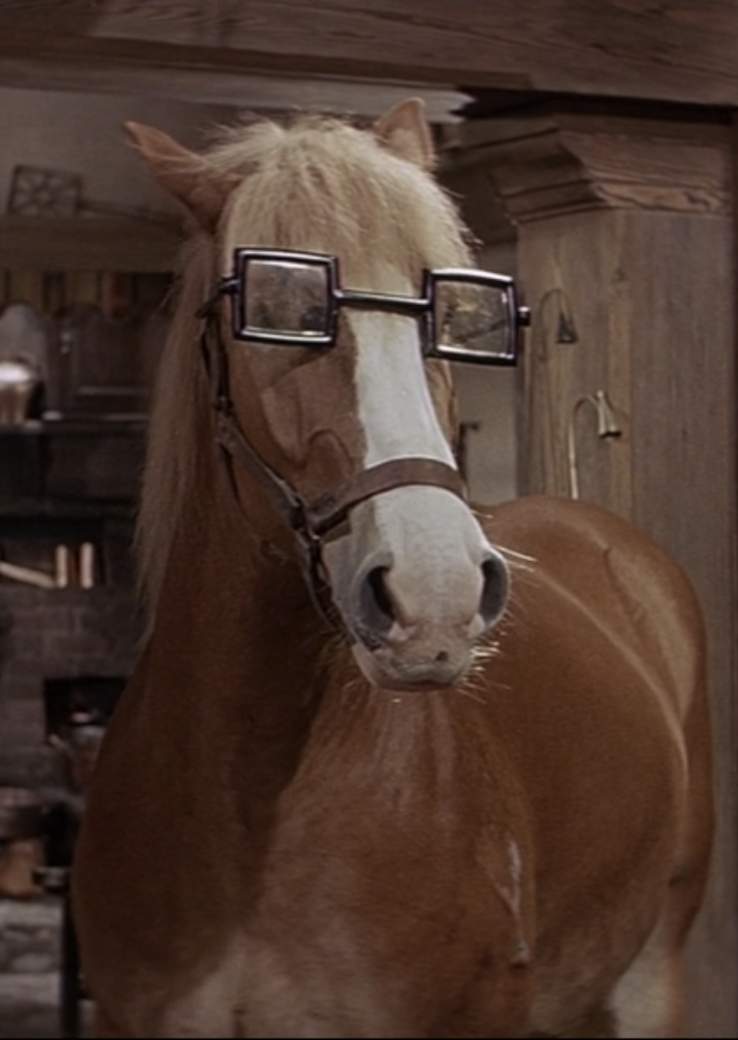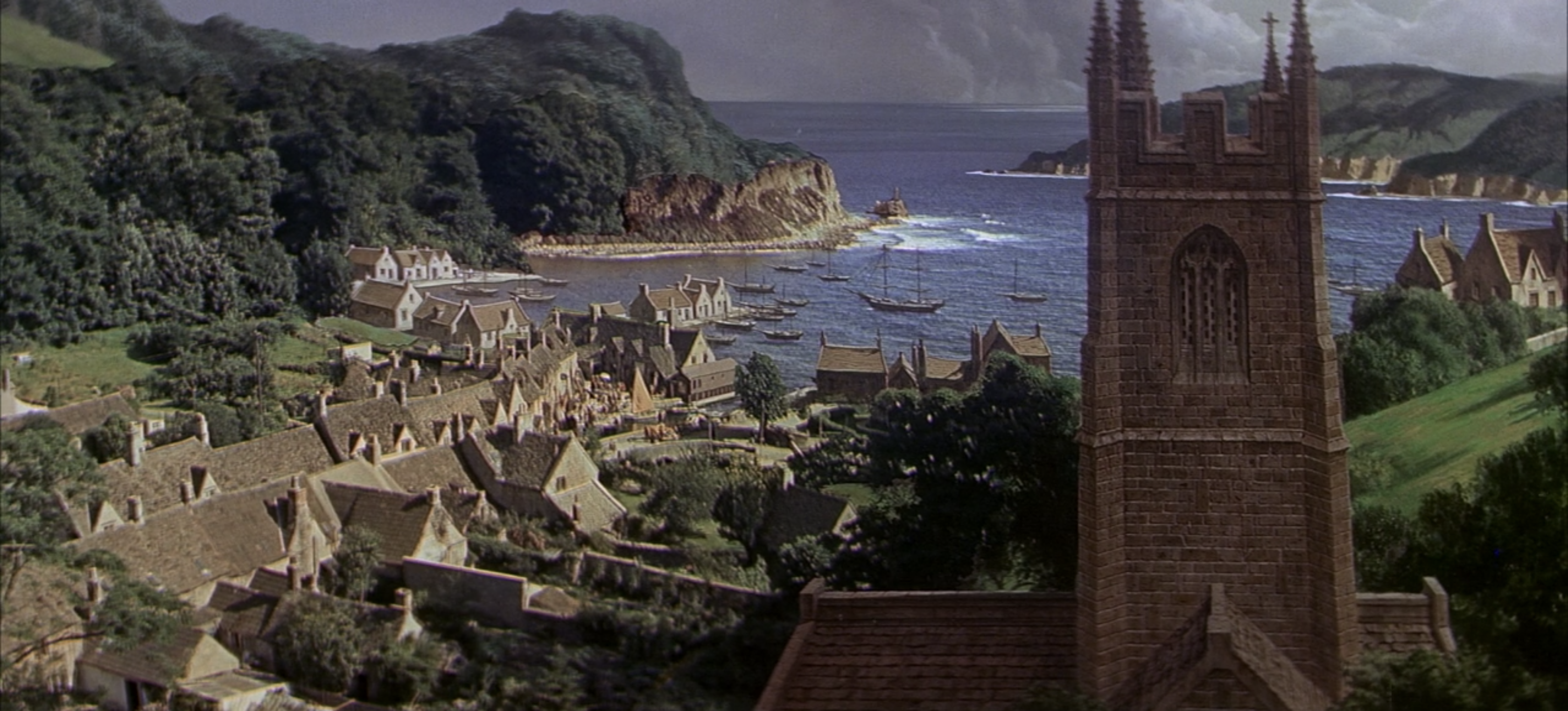"The Furniture," by Daniel Walber, is our weekly series on Production Design. You can click on the images to see them in magnified detail.

Over the course of the past year, I’ve done an informal retrospective series on the Best Production Design nominees of 1967. It isn’t an especially “New Hollywood” lineup, despite being the year of “Pictures at a Revolution.” Four of the nominees are lush period pieces, three of them lengthy musicals. They often feel like extravagantly-designed chaos, whirlwinds of sets and props that spin out of control. This is true of both the hilarious brawls of The Taming of the Shrew and the dated, stereotype-laden adventures of Thoroughly Modern Millie. Camelot, the winner, manages to split the difference between Old Hollywood excess and New Hollywood sexuality.
The final two films, both Best Picture nominees, are a bit less of a thrill. Guess Who’s Coming to Dinner and Doctor Dolittle are, respectively, the most realistic and most fantastical of the five nominees. However, despite their differences, they both underline the inadequate end-point of old-school studio design.
Doctor Dolittle is the more obvious punching bag. It's a bloated, meandering mess of haphazard musical numbers and international travel. The Doctor (Rex Harrison) begins in the idealized village of Puddleby, an assembly of idealized rural English homes that sit peacefully under an artificial sky.
Here he practices his art, talking to animals and attending to their various medical issues. However, he has bigger plans. A donation of a two-headed llama allows him to join the circus and make a large sum of money, enough to go off in search of the Great Pink Sea Snail. This quest occupies the second half of the film. It’s exhausting, but there are some fun details along the way. This tail-straightener for mice, for example, is an inspired visual joke.
So is this vegetable-themed eye chart for horses.
However, so much of the rest is a mess. There are some truly off-putting fake animals, including this nightmarish fox.
The problem, perhaps, is that Doctor Dolittle is not quite fantastical enough. Its matte paintings, for example, are a series of uncreative imitations of the real sky. This is far cry from the delirious abstractions of the 1950s and its painted dream ballets.
The Giant Pink Sea Snail isn’t even especially pink. It looks like an old carnival ride, large but inert. It’s a hulking blob of misguided imagination, trapped in a tangible uncanny valley. This shoddily ostentatious craftsmanship is practically a symbol of its era, bloated productions that no longer inspire enough wonder to justify their extravagance.
The real kicker, however, is how this precise problem also afflicts Guess Who’s Coming to Dinner. This industry-wide inclination toward a rich falseness is not only an obstacle for fantasy, but also for quiet family dramas.
Matt and Christina Drayton (Spencer Tracy and Katharine Hepburn) have a richly decorated home, what one would expect from a newspaper owner and an art dealer. Accordingly, most of their paintings show a level of income and taste, but nothing more nuanced. However, there’s one more interesting trope. The couple owns two pieces that depict black male subjects, a sculpture and a print. These underscore the way that Matt and Christina have conceived of their own liberalism, civil rights as the abstract liberation of abstracted bodies.
This is illustrated whenever Dr. John Prentice (Sidney Poitier) is in the same frame, though it only happens a couple times. For the most part, the decor of the house takes a back seat, tasteful but without thematic intent.
Besides, the bigger trouble isn’t inside the house. The Draytons have a beautiful terrace, overlooking the bay. You can even see the Golden Gate Bridge. Or, rather, you can see a matte painting of it.
It wouldn’t be so glaring if it weren’t for the film’s timeline, which requires new updates to the painting as the sun gradually descends. There aren’t any goofy errors, of course, but the effect is still jarring.
It’s a subtle, unintended reminder that despite the aspirations of bravery, Guess Who’s Coming to Dinner is just as meticulously manicured as any other Hollywood “social problem picture.” Even if the subject matter has pushed marginally forward, its style holds it back. Or, rather, the persistence of certain stylistic techniques reveals just how small a step forward this really is.










